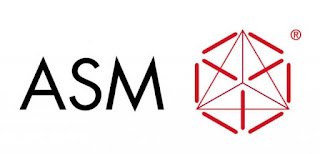Micro LED has been interested in the next generation display and been actively developing at many electronics manufactures and institutes for applications of AR/VR, wearable device and extra-large display as a core factor of the forth industry. Also it is evaluated to have superior properties to LED as well as OLED with low power consumption, excellent brightness, greater contrast, flexibility and reliability.
Micro LED of less than 10 µm size is required for displays needed high pixel per inch (PPI) but the quantum efficiency drop would occur by sidewall effect in the manufacturing process. Looking at the reason in detail, micro LED chips require separation of them by dry etching process and the sidewall effect reducing external and internal quantum efficiency happens not to optimize extraction of light by chemical contaminations and structural damages during the etching process.
Micro LED of less than 10 µm size is required for displays needed high pixel per inch (PPI) but the quantum efficiency drop would occur by sidewall effect in the manufacturing process. Looking at the reason in detail, micro LED chips require separation of them by dry etching process and the sidewall effect reducing external and internal quantum efficiency happens not to optimize extraction of light by chemical contaminations and structural damages during the etching process.
ALD passivation on the sidewall of Micro LED after dry etching process
The passivation of sidewall by atomic layer deposition recover and remove the plasma damage by dry etching so that the quantum efficiency could be increased and also the ratio of improvement could increase as small as the size of micro LED.
Specially, the interest of productive ALD equipment has been gradually increased because of the excellent dielectric passivation by ALD Al2O3 thin films expecting to improve quantum efficiency.
NCD has been developing wafer based high throughput batch ALD system continuously enable to form high quality oxide passivation to improve the quantum efficiency of micro LED. By introduction of the system in production of micro LED, it could be expected to guarantee the productivity, high quality and performance reliability of high resolution micro LEDs for applications of AR/VR, flexible and wearable devices and extra-large displays.
Specially, the interest of productive ALD equipment has been gradually increased because of the excellent dielectric passivation by ALD Al2O3 thin films expecting to improve quantum efficiency.
NCD has been developing wafer based high throughput batch ALD system continuously enable to form high quality oxide passivation to improve the quantum efficiency of micro LED. By introduction of the system in production of micro LED, it could be expected to guarantee the productivity, high quality and performance reliability of high resolution micro LEDs for applications of AR/VR, flexible and wearable devices and extra-large displays.
NCD Si wafer based batch ALD cluster system



%20(1).png)



